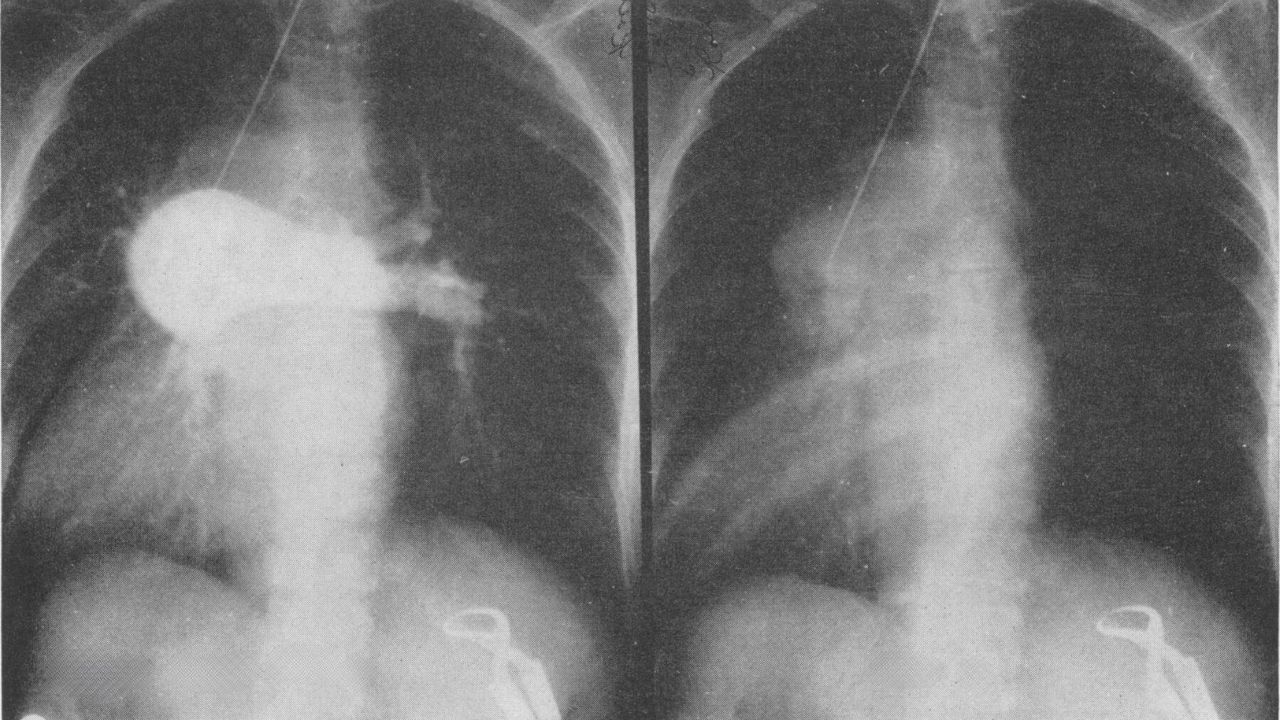
What is a Graham Steell Murmur? A Graham Steell Murmur is a specific type of heart murmur associated with pulmonary regurgitation, often secondary to pulmonary hypertension. Named after the Scottish physician Graham Steell, this murmur is typically heard as a high-pitched, blowing sound during the early diastolic phase of the cardiac cycle. It is most commonly detected at the left upper sternal border. Understanding this murmur is crucial for diagnosing underlying heart conditions, especially those affecting the pulmonary artery and right ventricle. This article will delve into 25 fascinating facts about Graham Steell Murmur, shedding light on its causes, symptoms, and significance in medical diagnosis.
Key Takeaways:
- A Graham Steell murmur is a heart condition linked to pulmonary hypertension. It's named after Dr. Graham Steell and can cause symptoms like shortness of breath and fatigue.
- Detecting and treating a Graham Steell murmur involves tools like stethoscopes and echocardiograms. Treatment may include medications, surgery, and lifestyle changes for better long-term outcomes.
What is a Graham Steell Murmur?
A Graham Steell murmur is a specific type of heart murmur associated with pulmonary regurgitation. This condition often arises due to high blood pressure in the lungs, known as pulmonary hypertension. Let's dive into some fascinating facts about this medical phenomenon.
-
Named After a Doctor: The murmur is named after Dr. Graham Steell, a Scottish physician who first described it in the late 19th century.
-
Pulmonary Regurgitation: This murmur occurs when the pulmonary valve does not close properly, causing blood to flow back into the right ventricle.
-
High-Pitched Sound: The murmur is typically high-pitched and can be heard best at the left upper sternal border.
-
Pulmonary Hypertension: Often, this murmur is a sign of pulmonary hypertension, a condition where the blood pressure in the lungs' arteries is elevated.
-
Diastolic Murmur: It is classified as a diastolic murmur, meaning it occurs when the heart relaxes between beats.
Causes and Symptoms
Understanding the causes and symptoms of a Graham Steell murmur can help in early detection and treatment. Here are some key points to consider.
-
Rheumatic Heart Disease: One common cause is rheumatic heart disease, which can damage the heart valves.
-
Congenital Heart Defects: Some people are born with heart defects that can lead to this murmur.
-
Shortness of Breath: Symptoms often include shortness of breath, especially during physical activity.
-
Fatigue: Patients may experience fatigue due to the heart's reduced efficiency.
-
Swelling: Swelling in the legs and ankles can also be a symptom, indicating fluid buildup.
Diagnosis and Detection
Detecting a Graham Steell murmur involves several diagnostic tools and techniques. Here’s how doctors identify this condition.
-
Stethoscope: A doctor can often hear the murmur using a stethoscope during a physical exam.
-
Echocardiogram: An echocardiogram can provide a detailed image of the heart, helping to confirm the diagnosis.
-
Chest X-Ray: A chest X-ray can show signs of pulmonary hypertension, such as an enlarged right ventricle.
-
Electrocardiogram (ECG): An ECG can detect irregular heart rhythms that may accompany the murmur.
-
Cardiac MRI: This imaging technique offers a more detailed view of the heart's structure and function.
Treatment Options
Treating a Graham Steell murmur often involves addressing the underlying cause. Here are some common treatment methods.
-
Medications: Drugs like diuretics and vasodilators can help manage symptoms and reduce pulmonary hypertension.
-
Surgery: In severe cases, valve repair or replacement surgery may be necessary.
-
Lifestyle Changes: Patients are often advised to make lifestyle changes, such as reducing salt intake and quitting smoking.
-
Regular Monitoring: Ongoing medical check-ups are crucial for managing the condition effectively.
-
Oxygen Therapy: For some patients, oxygen therapy can help alleviate symptoms by improving oxygen levels in the blood.
Prognosis and Long-Term Outlook
The long-term outlook for patients with a Graham Steell murmur varies. Here’s what you need to know about the prognosis.
-
Early Detection: Early detection and treatment can significantly improve the prognosis.
-
Chronic Condition: Pulmonary hypertension is often a chronic condition that requires lifelong management.
-
Quality of Life: With proper treatment, many patients can lead relatively normal lives.
-
Complications: Potential complications include heart failure and arrhythmias, which require careful monitoring.
-
Research and Advances: Ongoing research is continually improving our understanding and treatment of this condition, offering hope for better outcomes in the future.
Final Thoughts on Graham Steell Murmur
Graham Steell Murmur, a distinct heart sound, often signals underlying pulmonary hypertension. Named after Dr. Graham Steell, this murmur's discovery has been crucial for diagnosing heart conditions. Recognizing its unique characteristics, like a high-pitched sound during the heart's diastolic phase, can aid early detection and treatment.
Understanding the causes, such as mitral valve disease or chronic lung conditions, helps in managing the murmur effectively. Regular check-ups and echocardiograms are essential for those at risk. Awareness and knowledge about this condition can lead to better health outcomes.
Incorporating these facts into your understanding of heart health can make a significant difference. Stay informed, listen to your body, and consult healthcare professionals if you notice any unusual symptoms. Your heart's health is paramount, and being proactive can ensure a healthier future.
Frequently Asked Questions
Was this page helpful?
Our commitment to delivering trustworthy and engaging content is at the heart of what we do. Each fact on our site is contributed by real users like you, bringing a wealth of diverse insights and information. To ensure the highest standards of accuracy and reliability, our dedicated editors meticulously review each submission. This process guarantees that the facts we share are not only fascinating but also credible. Trust in our commitment to quality and authenticity as you explore and learn with us.
